
Unlocking audience insights: Innovative use of AI in marketing
- Tech
The topic of AI in marketing and the popularity of ChatGPT exemplifies a broader phenomenon: the accelerated adoption of intelligent technology solutions, especially within the marketing realm.
Many companies are embracing these technologies to enhance operational efficiency and enrich the customer experience. At the heart of this evolution are audience intelligence platforms that utilize AI for more nuanced and in-depth audience insights.
These platforms are revolutionizing how marketers comprehend their target audiences, offering depth and real-time data otherwise unattainable. By leveraging AI-driven insights, marketers can streamline their work processes while uncovering the intricate layers of audience behavior and affinities, paving the way for more personalized, impactful campaigns.
Whether you're an advocate of AI or still weighing its merits, the growth and application of AI in marketing are undeniable. In this article, we'll dive into what AI in marketing entails, its various applications, the capabilities of an AI-powered audience intelligence tool, and the multifaceted benefits.
Table of contents
What is AI in marketing?
Artificial intelligence (AI) marketing leverages AI processes and tools to produce nuanced customer insights, helping brands deeply understand online audiences, behaviors, sentiments, and trends.
AI-driven audience intelligence tools can sift through vast amounts of social data - identifying patterns, segmenting audiences, analyzing visuals, and gauging sentiments. Ultimately allowing marketers to get a clearer, more granular picture of what resonates with their audience - what they talk about, feel, and respond to.
In essence, AI-equipped tools help marketers make informed decisions by providing insights not just based on numbers but on a deeper understanding of the audience's psyche.
Let’s now take a deeper look at how audience intelligence platforms, like us here at Pulsar, integrate AI into our platform for next level insights.
4 ways Pulsar leverages AI for in-depth audience insights
According to a report from the Influencer Marketing Hub, 61.4% of marketers have used AI in their marketing activities, 44.4% have used AI for content production, and 54.5% believe that AI will greatly enhance their marketing efforts. Considering these figures, it’s clear that AI in marketing is a topic taking hold of the marketing industry.
To better understand the use cases of AI in marketing, let’s delve into how Pulsar's AI capabilities offer four powerful ways to garner in-depth audience insights:
1. Topic analysis
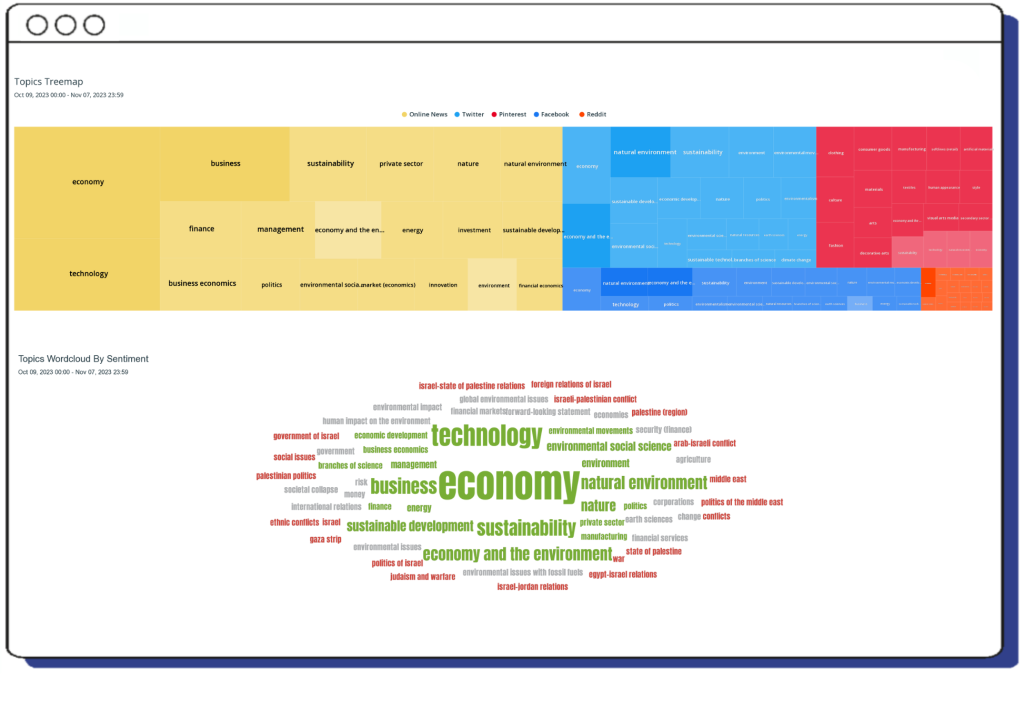
Topic analysis is a central component of modern AI-powered content examination. It pinpoints the main themes or subjects within the text, even amidst digital noise.
This advanced AI process is vital for sifting through and interpreting the vast expanses of unstructured text in various forms. From social media to online and print news and the ever-expanding universe of podcasts, topic analysis not only simplifies but accelerates the extraction of crucial insights from multiple sources.
Using Pulsar TRAC, you can delve beyond mere keywords to reveal underlying themes, capturing the essence of text without the need for explicit mentions. This sophisticated approach uncovers nuanced information that might otherwise remain hidden within the intricacies of language and context.
In essence, topic analysis ensures that brands maintain a pulse on the zeitgeist. AI allows brands to harness the ability to detect and engage with trending topics proactively, empowering marketers to create tailored content that resonates to spark genuine engagement within a target audience.
This intuitive understanding enables a richer, more contextual appreciation of content, elevating brand strategy with precision-crafted messaging that aligns seamlessly with current conversations and audience interests.
2. Entity analysis
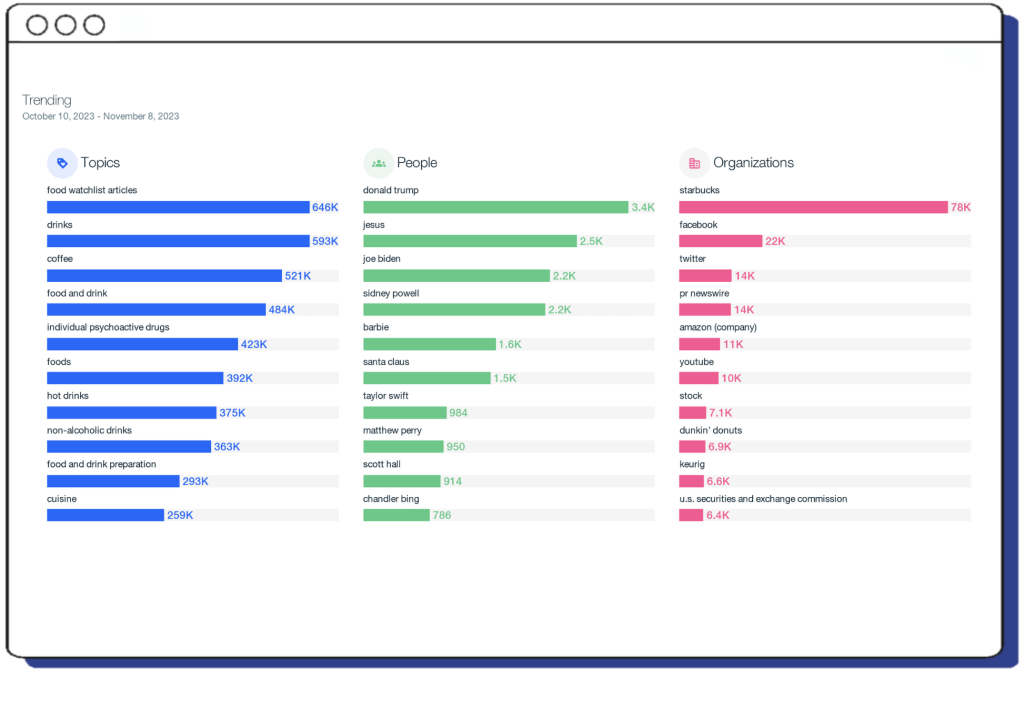
Entity analysis is a pivotal function of Natural Language Processing (NLP), utilizing AI to identify and categorize key terms in text. This technology discerns entities such as names of people, things and companies, giving structure to the previously unstructured.
Pulsar takes it a step further by tackling the challenge of disambiguation - ensuring that where a word like "Jordan" is mentioned, for example, you can distinguish whether this is a reference to the country, a name, or the sports brand. Similarly so for the word “Apple”. Through leveraging AI, Pulsar TRAC can distinguish between the tech company and the fruit, ensuring pinpoint precision in the insights delivered.
Entity analysis technology ensures no nuance is lost in translation, allowing for a granular understanding of audience discussions globally and equipping marketers with the insights to craft culturally resonant messages.
This cutting-edge approach on Pulsar ensures that insights drawn from data are not just accurate but also nuanced, considering the intricate ways audiences express themselves, making it an indispensable tool for marketing strategists seeking to connect with their audience on a deeper level.
3. Image analysis
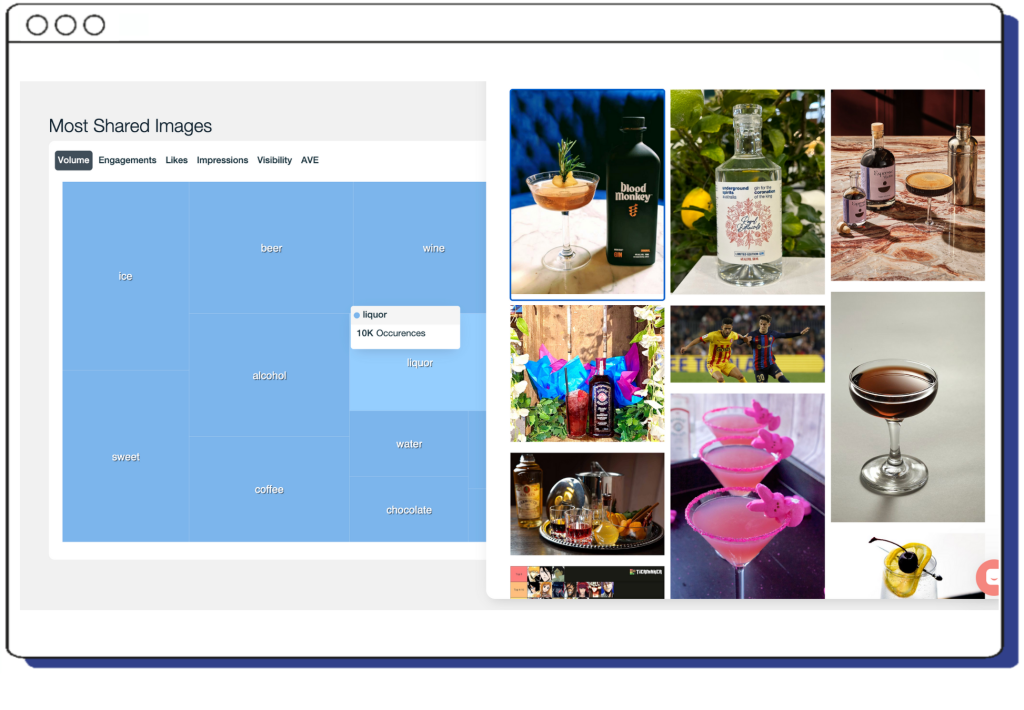
In today’s visually driven online landscape, image analysis is a crucial part of understanding audience engagement and preferences. Pulsar’s use of Image AI, or visual recognition, showcases the power of artificial intelligence in dissecting and interpreting the vast range of visual content that audiences see and engage with daily.
Pulsar's sophisticated AI models transcend mere image recognition, offering contextual understanding through vertical AI. This technology harnesses a variety of visual models tailored to each dataset, chosen for their relevance and accuracy, ensuring a deep and nuanced interpretation of visual content.
For example, in the food and beverage sector, AI used in Pulsar TRAC doesn’t simply detect 'food' in an image. It discerns the subtleties of cuisine, identifying dishes and even breaking them down to the ingredient level. As well as this, Pulsar also offers a vertical AI model on TRAC for food beauty, allowing you to group food images by how staged or appealing the food looks. This granular level of analysis opens doors for brands to tap into emerging food trends, understand the culinary preferences of their target market and decipher their brand perception.
The retail sector benefits similarly. Through specialized models for clothing and beauty, AI can pinpoint fashion trends and beauty looks, empowering brands with data to drive their creative and content strategies forward. What sets Pulsar apart is the ability to not only gather these insights but to interpret what kind of visual content garners more engagement and resonance with audiences.
Image analysis acts as a compass for brands navigating the complex digital environment and constant flow of visual content reaching audiences, ensuring that every image chosen and every visual strategy implemented is data-backed and optimized for audiences. In short, AI-driven image analysis transforms visual data into actionable marketing insights.
4. Sentiment analysis
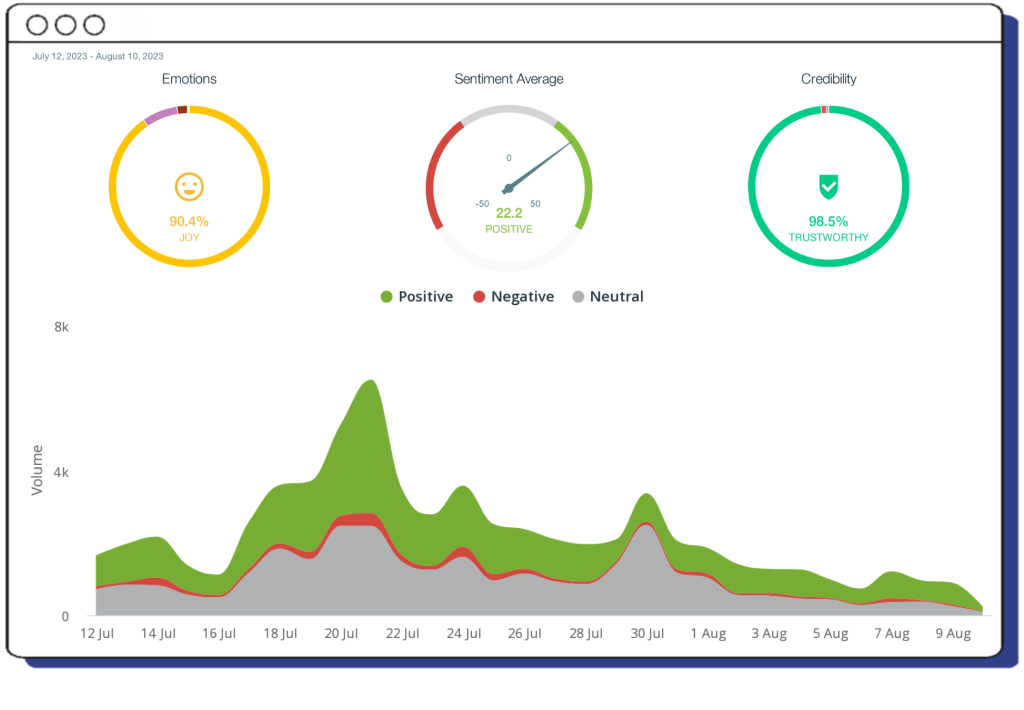
Sentiment analysis is at the heart of modern social listening, providing brands with the emotional pulse of their audience's conversations. It allows businesses to understand how audiences perceive their brand, product, or topic across various channels. By gauging how people feel about specific topics, products, or brands, AI-powered sentiment analysis allows marketers to tailor their strategies for maximum positive impact.
Utilizing a scale that ranges from negative (-50) to positive (+50), Pulsar’s AI engine assesses the content and assigns a sentiment score. Sentiment analysis is not a blunt tool but a sensitive instrument capable of detecting the subtleties of human expression by evaluating language use, including modifiers and negations, to determine the intensity of opinions.
Beyond individual sentiment scores, Pulsar provides an average sentiment rating for the entirety of the data set, offering a wide-scope view of the general tone surrounding a topic. This insight is vital for brands to gauge the overall sentiment trend within their audience segments.
By leveraging these insights, brands can craft responses, strategies, and content that resonate with their audience, fostering a stronger, more empathetic connection and guiding the brand narrative in a direction that aligns with public sentiment.
The benefits of utilizing AI in marketing
Now that we’ve outlined the 4 ways Pulsar TRAC leverages AI within the platform, let’s now explore the benefits of utilizing AI in marketing.
-
Data analysis at scale:
No longer limited by human bandwidth, AI can swiftly analyze large datasets, highlighting trends and patterns that could be easily missed. Considering the sheer amount of data available from various social media channels, marketers would struggle to manually sift through this vast amount of customer data unless aided by an efficient AI tool able to digest and analyze huge amounts within seconds.
Let’s consider coffee audiences as an example. Coffee is, without a doubt, a huge conversation, but a function like entity classification can help us analyze this topic quickly.
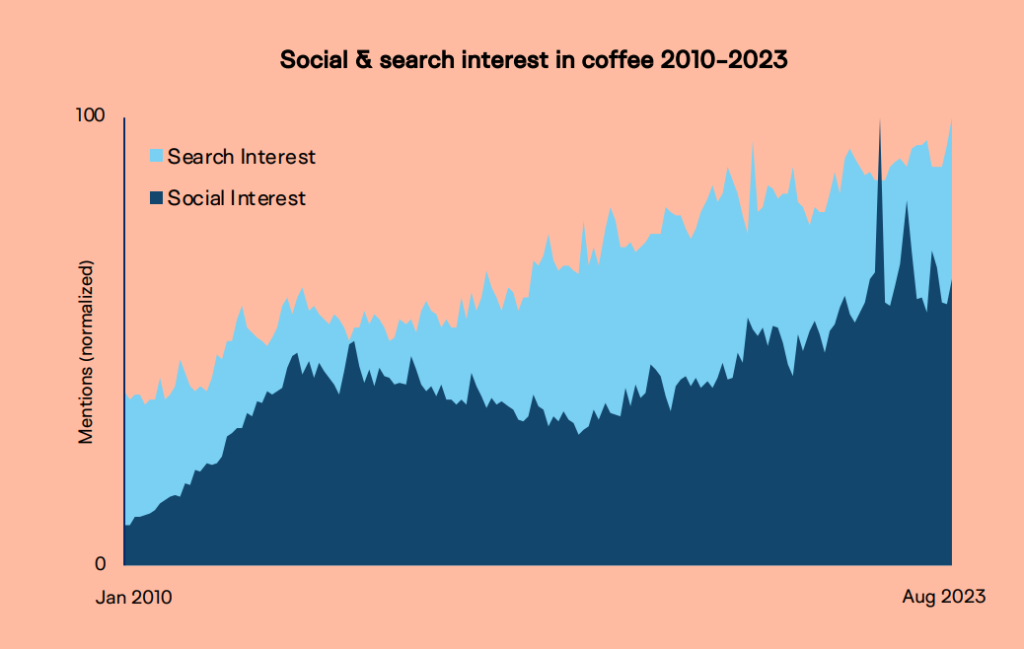
Every day, millions of social media posts, reviews, blog entries, and news articles discuss various aspects of coffee - from the latest artisanal brewing techniques to the newest café openings. Harnessing insights from this vast stream of data is where AI, particularly entity classification, demonstrates its strength.
For example, our AI tools processed thousands of social media posts in moments, which would take a human marketer weeks, if not months. It identified and classified entities such as "Espresso," “Latte” and “Iced Coffee” which are not just terms or types of coffee but valuable market segments.
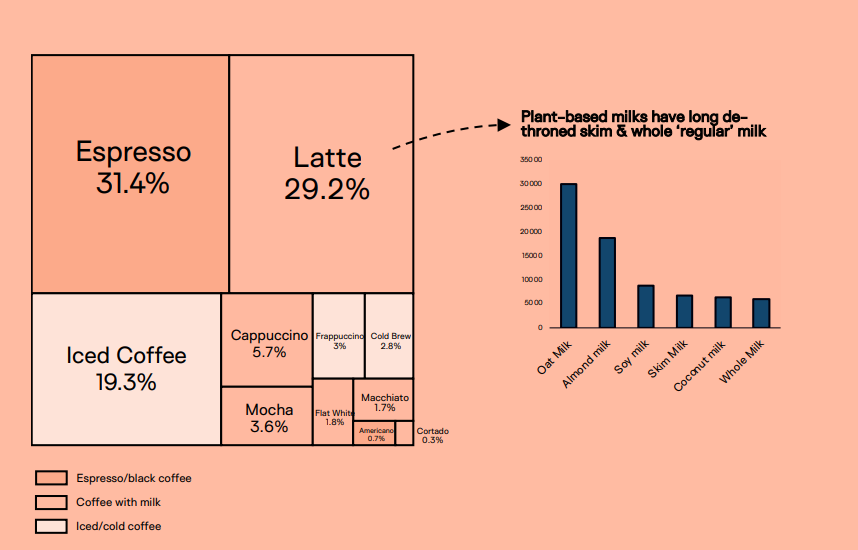
Beyond this, entity analysis highlighted trends and correlations that might have slipped through manual analysis. We learned that discussions around "sustainability" surged alongside "coffee pod machines," indicating a rising consumer consciousness about the environmental impact even when considering convenient brewing options. Similarly, we uncovered a substantial uptick in conversations linking "home brewing" with "specialty coffee," suggesting a market shift towards quality and craft, even from home.
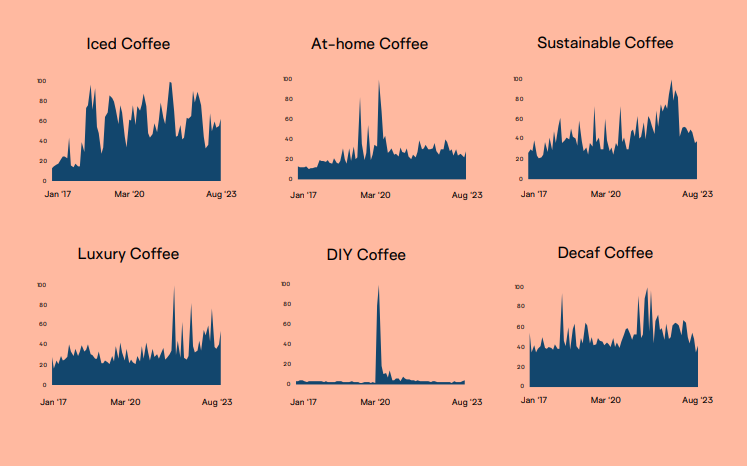
In applying entity analysis to our coffee report, we achieved a comprehensive and swift analysis of the coffee market, enabling us to identify target niches, understand the competitive landscape, and predict upcoming trends.
It's through AI's data analysis at scale that we can fully leverage the vastness of available data, transforming it into strategic knowledge that powers informed decision-making.
-
Instant insights:
AI enables businesses to digest vast amounts of data and immediately produce insights that marketers can act on in real-time for more personalized content and campaigns for audience segments. Analyzing the impact of your marketing efforts in real-time, allows marketers to adjust their strategies accordingly to ensure their campaigns are optimal and effective.
Let’s turn to another example.
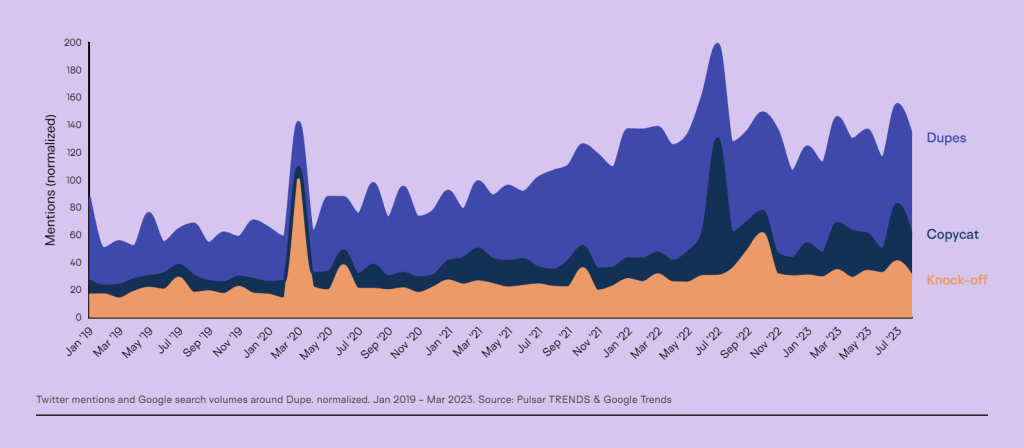
Our dupes report showcases how analyzing the most engaged-with image categories in a predominantly visual dialogue offers critical insights into content that resonates with audiences in specific contexts.
Consider the example of the makeup sector. The report details substantial engagement with images tagged as #makeup, especially those comparing 'dupes' (more affordable alternatives) with original products. These comparative visuals not only drive engagement but also inform marketers about consumer behavior, preferences, and the potential for cost-effective product alternatives. A staggering 19,000 engagements reflect a trend where value and visual appeal collide, guiding marketers toward strategies that emphasize cost efficiency without compromising on aesthetics.
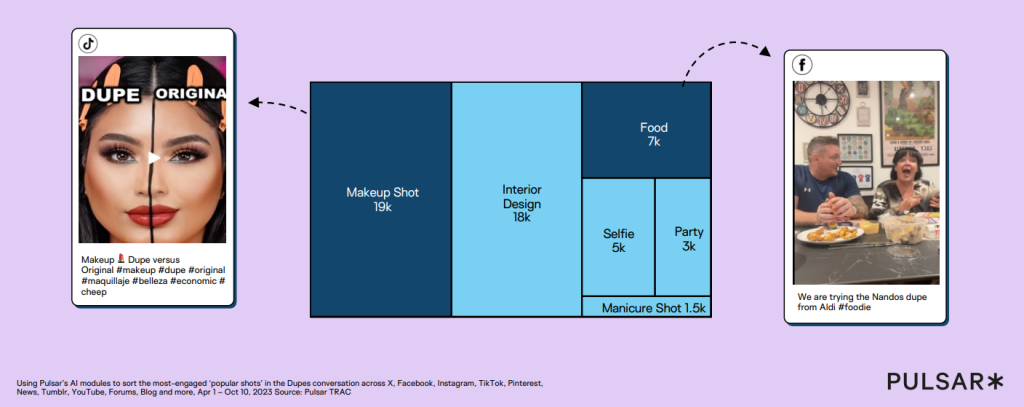
Similarly, in interior design, a close second with 18,000 engagements, the visuals that are prevailing are those that showcase transformative effects or inspirational settings that drive the imagination of the consumer. This insight is invaluable for marketers aiming to capture the attention of home enthusiasts and aspirational designers.
Our report underscores a key finding: the highest engagement rate falls under makeup shots and interior design images. These dupe images are more than just a trend; they signify a shift towards value-oriented purchasing among consumers. By capitalizing on these insights, marketers can tailor their campaigns to meet the growing demand for affordable quality, thus driving engagement and fostering a deeper connection with their audience.
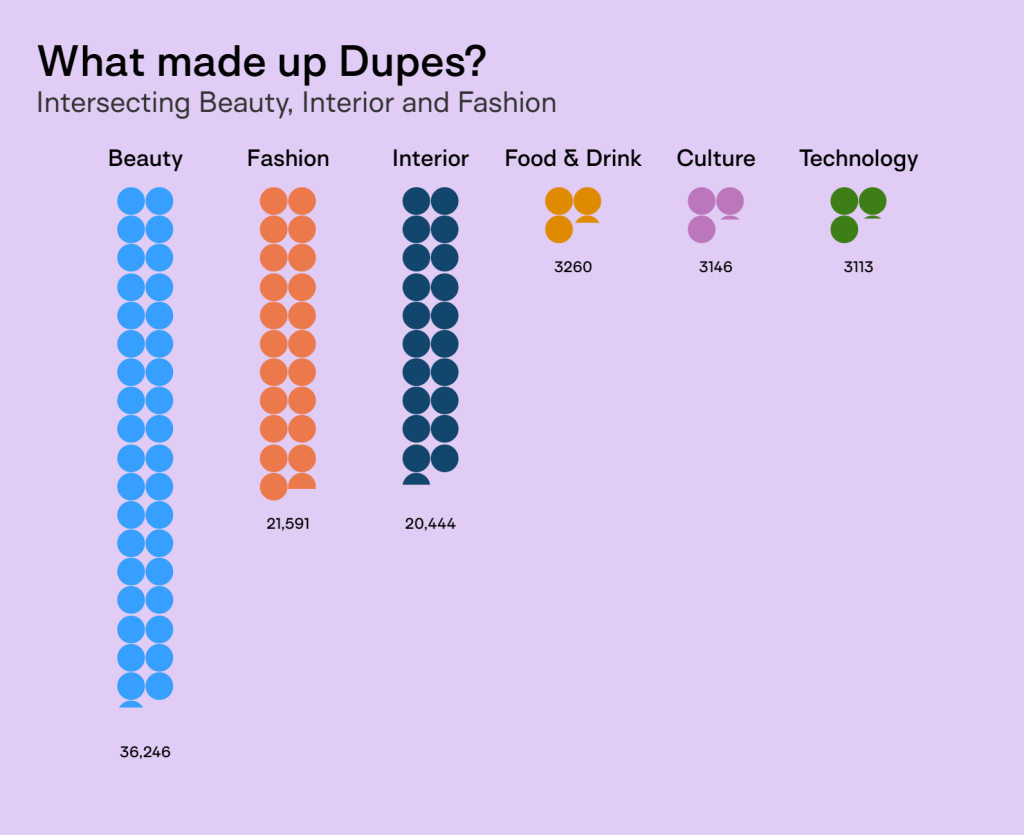
Through our advanced AI tools, we can instantly identify and categorize these image types and trends, equipping brands with the knowledge to create impactful visual content that aligns with consumer preferences and current trends. This real-time analysis is essential for staying ahead in a market constantly influenced by the visual narratives shared across social platforms.
-
Personalized customer experiences:
The more personalized your customers' experiences are, the more likely they will return. So, how is personalization achieved with the help of AI-driven marketing tools?
AI allows for an intimate understanding of customer preferences, shared affinities and behaviors, enabling marketers to tailor experiences and curate content that resonates on an individual level. This focus on personalization not only enhances the customer journey but also significantly boosts campaign effectiveness.
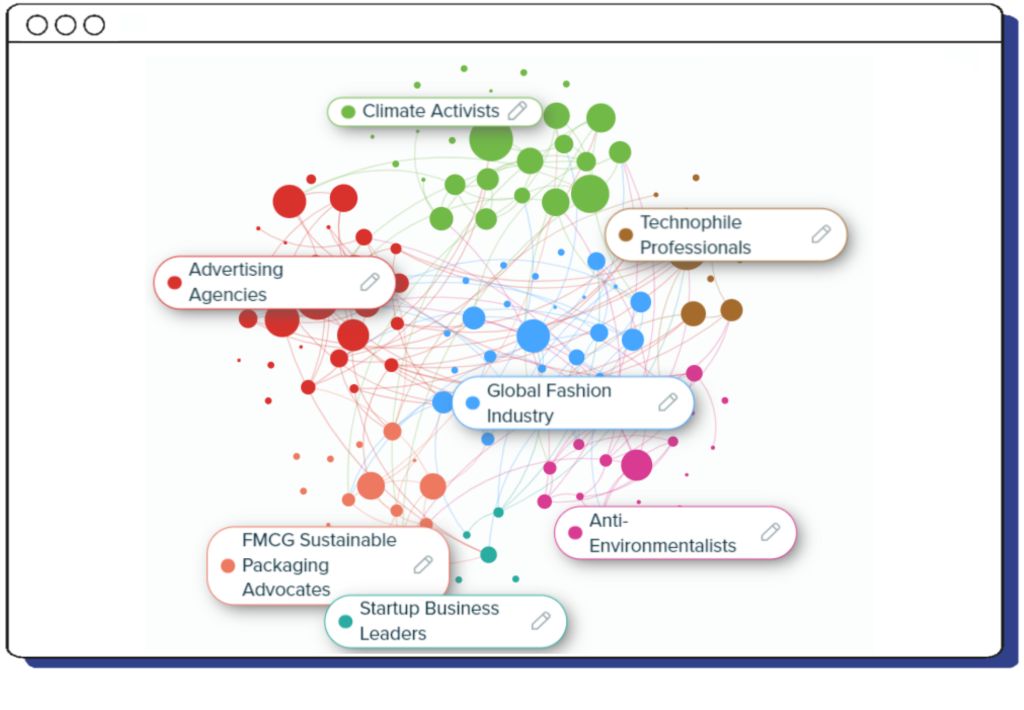
Audience segmentation is a key example of personalization. By harnessing the power of AI to slice through the complexity of data and segment audiences in real-time, it enables marketers to uncover not just broad demographic groups but to delve into psychographic and behavioral segments that reveal the diverse tapestry of consumer identities and inclinations.
From this, marketers can tailor their messaging to resonate deeply with each segment, crafting experiences that are profoundly relevant to the nuanced groups within their audience. This granular approach to segmentation ensures that each campaign strikes a chord with consumers in a way that feels both individualized and insightful.
-
Predictive analysis for forward planning:
Predictive analysis bestows marketers with the foresight to navigate future market trends proactively. By analyzing historical data trends, forecasting the future becomes possible, allowing brands the preparation needed to engage with upcoming demands in real time.
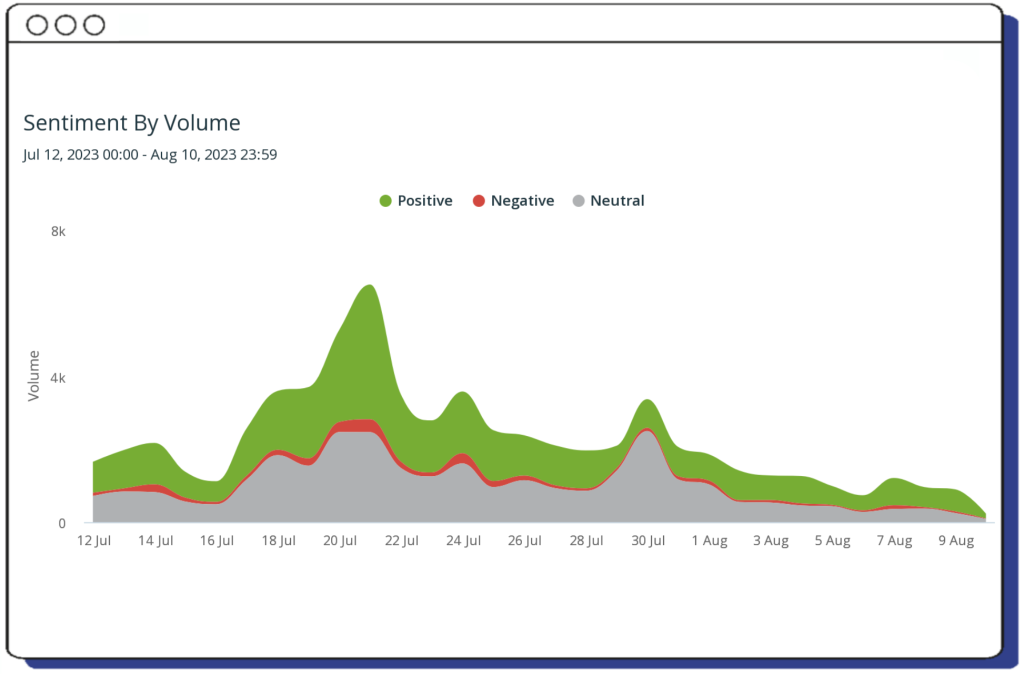
Let's turn back to our earlier discussion on sentiment analysis. Predictive analysis elevates this insight by projecting current emotional trends into future market opportunities. AI's nuanced reading of language and sentiment - including emerging jargon, emoji usage, and shifts in conversational tone - offers a sophisticated lens to identify burgeoning interests. For example, a steady rise in positive sentiments towards sustainable packaging could indicate an upswing in eco-conscious consumer behavior. Recognizing such patterns enables brands to align with consumer values ahead of the competition.
-
Efficiency and cost savings:
A pivotal advantage of utilizing AI in marketing is the significant enhancement of efficiency, the corresponding reduction in costs and improved return on investment (ROI).
AI minimizes the need for manual effort, allowing marketing teams to focus on creative and strategic tasks. With AI rapidly sifting through vast data sets to identify patterns, trends, and opportunities, processes that once took weeks manually are possible in real time. This speed and precision in execution mean that campaigns can be optimized from the beginning, reducing wasted ad spend on poorly performing channels or focusing on specific audience segments unlikely to convert. By forecasting consumer behavior and preferences, AI enables marketers to tailor their efforts more closely to customer demand, thereby increasing the likelihood of conversion and customer retention.
AI in marketing ensures that every action taken is data-informed and strategically sound for optimal results.
The future of AI in marketing
The role of AI is undeniably burgeoning in the future of marketing, carving out new paths of innovation at a staggering pace. Yet, it's crucial to recognize the inherent limitations that accompany AI.
While AI in marketing offers a spectrum of advantages, from sharpening campaign effectiveness to unlocking deep audience insights, it serves to augment rather than supplant a marketer's unique creative spirit. It shoulders the heavy lifting of data processing, allowing marketers to dedicate their irreplaceable human ingenuity to crafting compelling narratives and forging genuine connections with audiences.
As we embrace the advancements AI brings to marketing, it's vital to underscore the synergy it creates rather than the substitution. It aids, informs, and supports, empowering marketers to reach new heights of creativity and innovation.
To stay up to date with our latest insights and releases, sign up to our newsletter below:
